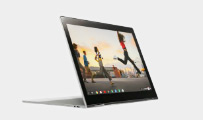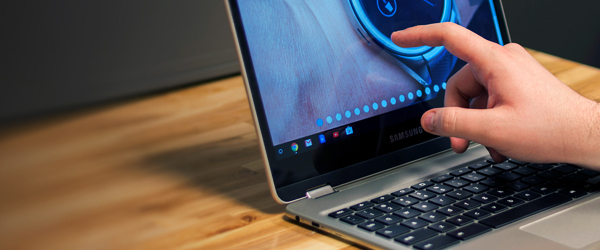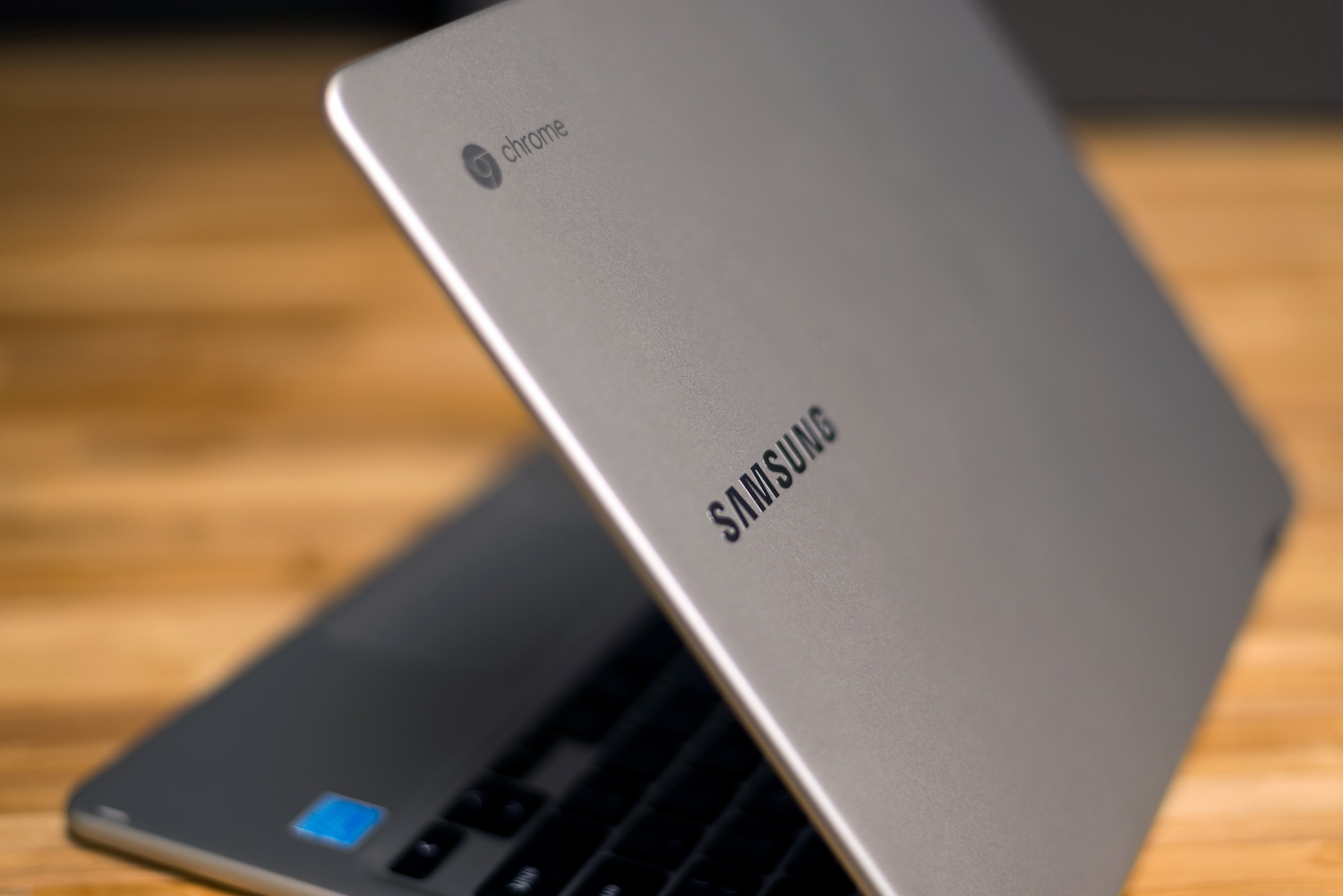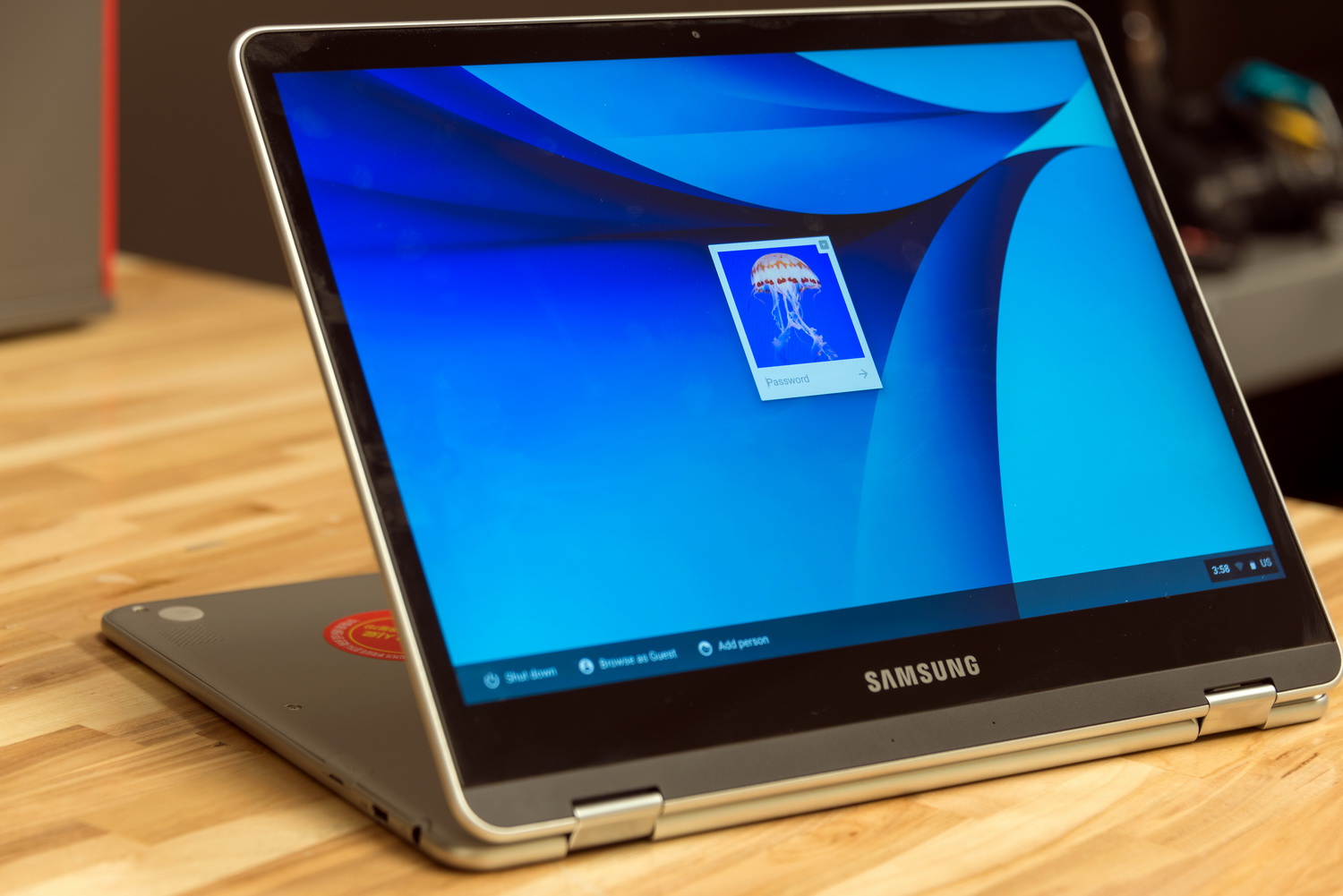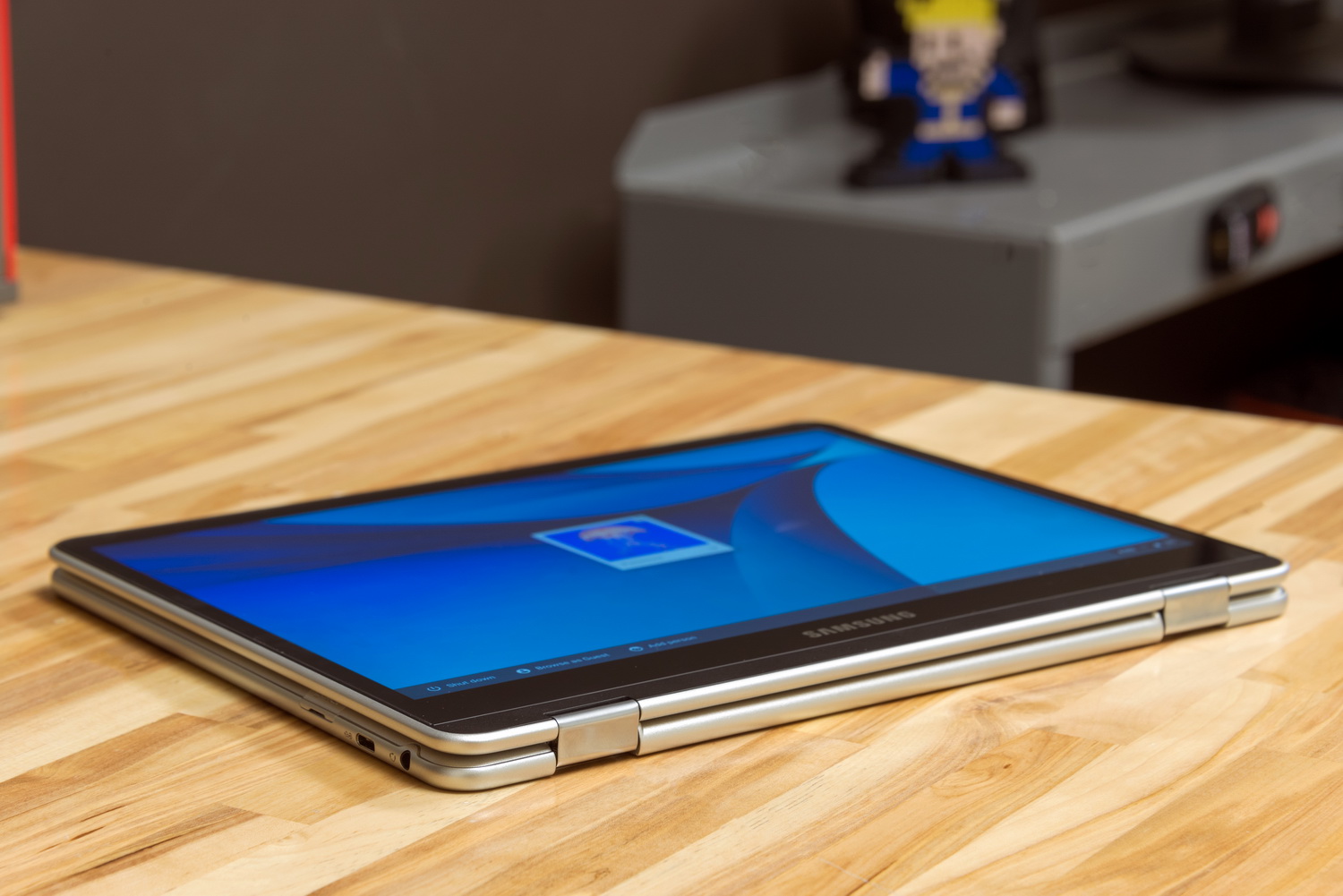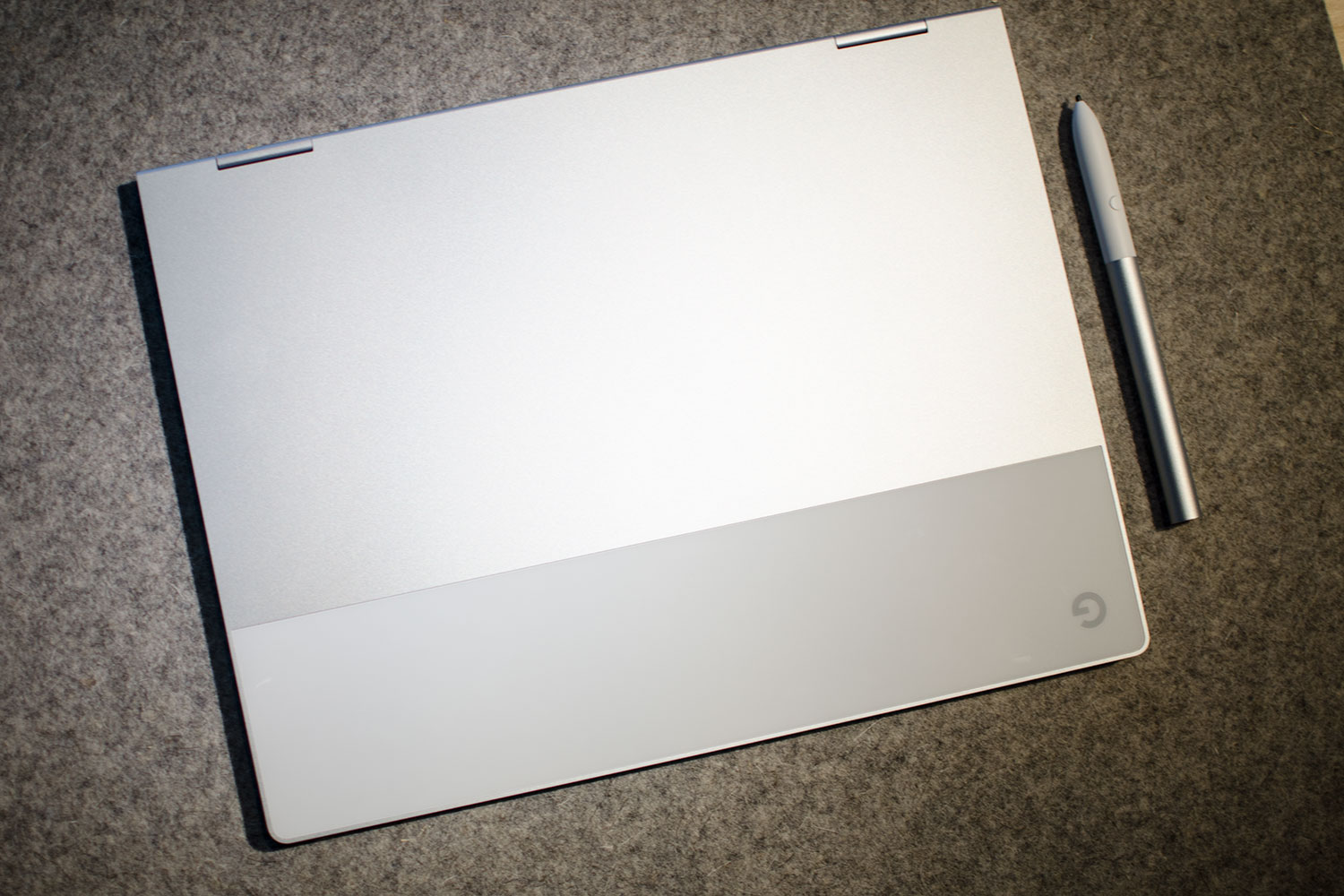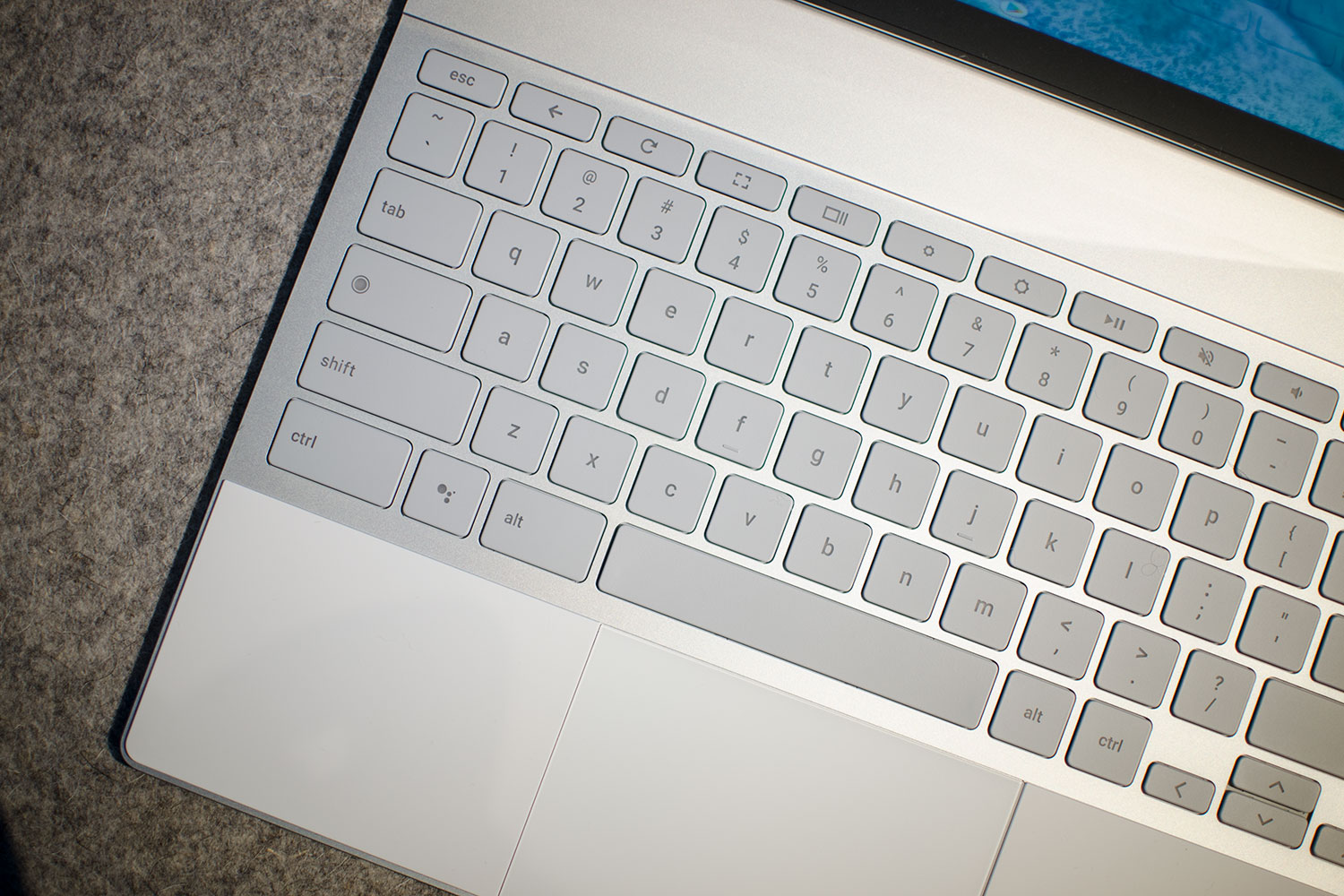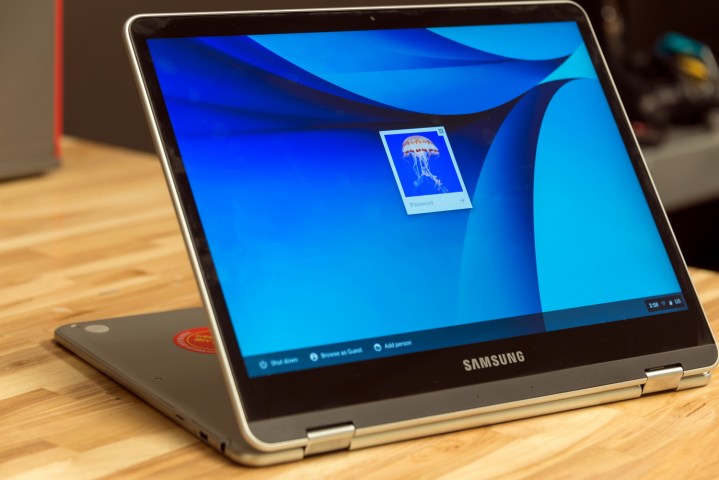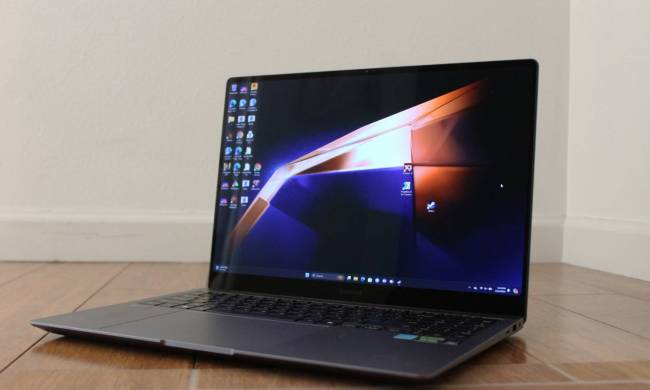Google’s Chrome OS powers a host of Chromebook notebooks that have taken the PC market by storm. The platform’s biggest impact is at the low end, particularly in education, but that doesn’t mean inexpensive notebooks are the only options. Several vendors, including Samsung, offer higher-end machines. Even Google returned to the premium segment with its replacement for the defunct Chromebook Pixel.
Here, we compare the Google Pixelbook versus Samsung Chromebook Pro to see which machine takes the premium Chromebook crown. Both of these Chromebooks are convertible 2-in-1s with pens that allow for drawing, handwriting, and annotating documents, but are they actually in the same class? Read on to find out.
|
Samsung Chromebook Pro |
Google Pixelbook |
|
| Dimensions | 11.04 x 8.72 x 0.55 (in) | 11.4 x 8.7 x 0.40 (in) |
| Weight | 2.38 pounds | 2.4 pounds |
| Keyboard | Full-size keyboard | Full size backlit keyboard |
| Processor | Sixth-generation Intel Core m3 | Up to seventh-generation Intel Core i7 |
| RAM | 4GB | 8GB or 16GB |
| Graphics | Intel HD Graphics 515 | Intel HD Graphics 620 |
| Display | 12.3-inch LED-backlit display with IPS technology | 12.3-inch LED-backlit display with IPS technology |
| Resolution | 2,400 x 1,600 (235 ppi) | 2,400 x 1,600 (235 ppi) |
| Storage | 32GB eMMC | Up to 512GB NVMe SSD |
| Networking | 802.11ac, Bluetooth 4.0 | 802.11ac, Bluetooth 4.2 |
| Ports | USB-C/Thunderbolt (2), microSD, headphone jack | USB-C 3.1 (2), headphone jack |
| Webcam | 720p webcam | 720p webcam |
| Operating System | Chrome OS | Chrome OS |
| Battery | 39 watt-hour | 41 watt-hour |
| Price | $550 | $1,000+ |
| Availability | Base model now (Google Play Store) | |
| Review | Full review: 4 out of 5 stars | Full Review: 3 out of 5 stars |
Design
The Samsung Chromebook Pro is a solidly built 360-degree convertible with an elegant but unobtrusive design. Its dark-gray, all-aluminum chassis looks professional compared to some other Chromebooks. It stands out with rounded edges and a tablet-like feel.
An important aspect of any convertible machine is the hinge, which needs to be both stiff enough to firmly hold the display in place during any mode while being smooth enough to effortlessly swivel between them. We found the Chromebook Pro’s hinge to provide just the right amount of tension.
Overall, the Chromebook Pro is a well-built and attractive machine, particularly at its still-affordable price point.
The Google Pixelbook strives for a more premium design. Its chassis is also aluminum, but it adopts an aesthetic that’s clearly intended to mimic Google’s Pixel smartphones. For instance, it has the same kind of glass cutout in the upper quarter of the chassis backside. This identifies the Pixelbook as a member of the Pixel family while enabling better wireless connectivity.
The bezels are a little larger than usual, which Google says is to make the machine easier to grip in tablet mode. The problem here is that they make the Pixelbook larger than the Chromebook Pro in width and depth, making them feel a bit outdated.
Google engineered the Pixelbook to be a very thin device at just 0.40 inches, which is noticeably more svelte than the Chromebook Pro. Its overall design feels like the final realization of a portable, cloud-connected device, which is what the Chromebook range is all about. The fact that the Pixelbook does it with powerful hardware under the hood is even more impressive.
The Chromebook Pro has a good design that’s just fine for the price point, but the Pixelbook is more elegant, attractive, and useful in tablet mode. Its silver and white paint job is eye-catching and helps set it apart from the competition. The white, soft-touch plastic also has a luxurious feel. However, keep a firm hand on it, as the glass can be slippery.
The Pixelbook wins this category by a fair margin.
Winner: Google Pixelbook
Performance
Samsung equipped the Chromebook Pro with a sixth-generation Intel Core M3-6Y30 processor, which provides sufficient performance for Chrome OS — and for running Android apps — while promising better battery life. There’s 4GB of RAM, which again is more than enough to handle Chrome OS. The 32GB of eMMC storage won’t win any speed records, but it fares decently with a number of apps. Chrome OS still benefits greatly from cloud storage and isn’t a processor-intense OS, so while these specifications aren’t impressive, they get the job done.
The Pixelbook, on the other hand, is equipped with strong enough components to compete with a full-on Windows 10 PC. It comes with a seventh-generation Intel Core i5-7Y57 or i7-7Y75 processor options, along with up to 16GB of RAM and up to 512GB of fast NVMe solid-state drive (SSDs). Whether or not a Chrome OS machine really needs that much power is questionable, but it’s there if you need it.
In our testing, we found the Pixelbook only really slowed down when working with 20-plus tabs open at a time. In general usage, it feels snappy and responsive. However, its ability to run certain Android apps was questionable, as we often experienced bugs and crash issues during testing. Considering the Pixelbook is much larger than your average Android tablet, many apps don’t scale correctly to the display’s size. These are similar complaints about Chromebooks in general, but it’s a big disappointment that Google didn’t pay more attention to its own first-party product.
Despite those issues, the Pixelbook gets the win here for simply outclassing its Chrome OS competition. Its hardware and performance are better, even if the end-user experience isn’t all that different.
Winner: Google Pixelbook
Keyboard, mouse, and pen
Both the Chromebook Pro and the Pixelbook offer fairly premium-feeling keyboards with unexpectedly deep travel — but again, Google makes some significant strides with the Pixelbook. Whereas Samsung’s keyboard feels a little cramped, Google provides a fantastic layout with its keyboard and throws in some fancy backlighting to boot.
As far as touchpads go, the Pixelbook again comes out the winner with its edge-to-edge size and responsive feedback. Both machines offer responsive touch displays that promise good support for the millions of Android apps made available to Chrome OS.
Samsung was the first company to provide pen input on Chromebooks — and was the only one until Google’s Pixelbook. While Samsung’s pen support is decent across its line of notebooks and phablets, Google engineered some impressive specifications into the Pixelbook Pen.
Google’s peripheral supports over 2,000 levels of pressure sensitivity, which is competitive with many Windows 10 2-in-1s. It also supports the newer tilt function — up to 60 degrees of angular awareness, in fact — that’s only provided by a few other machines. It’s significantly more responsive with a 10-millisecond latency.
Although the Pixelbook Pen boasts impressive specifications, in practice we found its use limited. It only works in a handful of Google-approved applications, and its chunky size means it’s better for highlighting than fine pen work. Its circular build means it easily rolls off a tabletop and since it can’t attach anywhere on the Pixelbook, it’s easily lost.
As a $100 add-on too, it’s hard to justify that additional cost.
Winner: Google Pixelbook
Connectivity
The Samsung Chromebook Pro is minimally equipped when it comes to connectivity. It provides two Thunderbolt 3 ports (USB-C), a microSD card slot, and a 3.5mm headphone jack. That makes it just fine for future connectivity, but you’ll need a dongle to connect legacy USB-A devices.
The Google Pixelbook is even less well-connected. It has just two USB-C 3.1 ports and a headphone jack. If you’re looking for Thunderbolt 3 support or an SD card reader, then the Pixelbook isn’t the right choice.
Winner: Samsung Chromebook Pro
Display
Samsung equipped the Chromebook Pro with a very nice and high-resolution LCD. It’s 12.3 inches diagonally and sports a high 2,400 x 1,600 resolution (235 ppi) panel in the increasingly common 3:2 aspect ratio. That makes it great for productivity, like using the pen for drawing and handwriting, but some letterboxing occurs when watching video. We found the display to be bright with vivid colors and solid contrast, checking off some important boxes when it comes to overall display quality.
The Google Pixelbook’s display is identical in terms of specifications. It’s also a 12.3-inch LCD with 2,400 x 1,600 (235 ppi) resolution and a 3:2 aspect ratio. During our review, we found it to be bright enough to overcome glare while having vibrant colors and respectable black levels. It can look a little gray when displaying very dark videos and images, but that’s a relatively common problem with LCDs.
The real differentiating factor between these two displays is bezel size. The Pixelbook looks dated compared to more modern-looking thin-bezel machines. As a result, we give the win to the Chromebook Pro.
Winner: Samsung Chromebook Pro
Portability and battery life
The Samsung Chromebook Pro is a relatively slim Chrome OS machine at 0.55 inches thick, and it’s light at 2.38 pounds. That makes it easy to toss into a backpack and carry around for quick work — noting that you’ll want an internet connection to be most functional with Chrome OS.
The 39 watt-hour battery is on the small side, but Chrome OS is an efficient platform while the Core m3 processor sips power. This allows the Chromebook Pro to last for a reasonable amount of time on a charge. In our testing, it exceeded other Chromebooks but fell short against the best Windows 10 2-in-1 machines.
The Google Pixelbook’s footprint is larger than the Chromebook Pro, but it’s also thinner at 0.40 inches while weighing almost exactly the same at 2.4 pounds. That makes it roughly equal in terms of how it weighs you down while traveling. The battery is similarly sized at 41 watt-hours, but the CPU and storage are more power-hungry.
In our testing, the Pixelbook was capable of lasting four hours and ten minutes, longer than competitive Windows 2-in-1s like the Lenovo Yoga 920 and Microsoft Surface Pro. In everyday use, we found the Pixelbook just as capable, draining just 30 percent after a few hours of general usage.
With comparable weight and size, the Pixelbook’s impressive battery life gives it the nod in this category.
Winner: Google Pixelbook
Availability and price
As we mentioned at the beginning, Chromebooks are typically low-cost machines — indeed, that’s much of their appeal compared to Windows 10 PCs.
The Samsung Chromebook Pro was introduced as a relatively premium Chromebook at $550, with some added benefits thanks to the included pen. We found it well worth the extra investment for anyone interested in running Chrome OS, and $550 is a truly budget machine compared to most Windows 10 PCs. You’re likely to spend $1,000 or more to get a machine that runs Windows 10 as efficiently as the Chromebook Pro runs Chrome OS.
However, that was in 2017. Samsung no longer sells this particular model, but you can still get it from Amazon for an inflated price of $710.
The Google Pixelbook is in another class entirely when it comes to pricing. It’s still available and starts at $1,000 for a configuration with a Core i5 CPU, 8GB of RAM, and a 128GB SSD. Pricing runs up to $1,650 with a Core i7, 16GB of RAM, and a 512GB SSD. That’s a lot more money for a bit more power and a more luxurious design and build. On paper that puts in line with best Windows 10 2-in-1s, but it’s hardly a world-beater.
Considering the hardware difference between the Chromebook Pro and Pixelbook does little to justify the large leap in price, the Samsung 2-in-1 offers much more bang for the buck. Unfortunately, limited availability takes it off the map.
Winner: Google Pixelbook
A win for Google
At one time, the Samsung Chromebook Pro was a great choice at a reasonable price point. Even if you can find one today, it still offers a more affordable price than Google’s Pixelbook. Were it still in production, it would win this battle by a landslide.
By comparison, the Google Pixelbook is more of a hero device for the Chrome OS platform, and its main purpose is to showcase Google features like Google Assistant. Even with advancements in the keyboard, touchpad, and stylus, ultimately you’re paying a lot of money to make sure that your Chromebook will perform at its absolute best and have the freshest design.
But the Chromebook Pro’s days have officially come and gone despite having a better value and a great experience, so Google comes out as the clear winner.
Still, while the Pixelbook is a special machine that highlights the Chrome OS platform, the Samsung Chromebook Pro is still worth buying at its currently inflated cost. It’s just a better all-round device and a great alternative to Google’s pricier Pixelbook.

